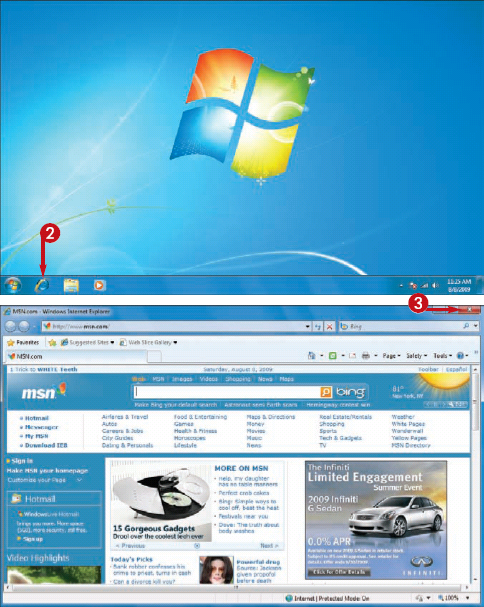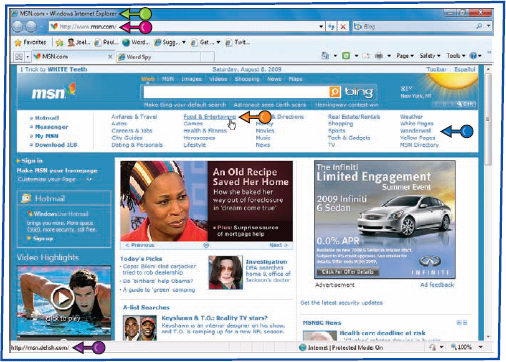1. Start Internet Explorer
You can use Internet
Explorer, Windows 7's built-in Web browser program, to surf the Web. To
do this, you must first start Internet Explorer.
When you have completed
your work on the Web, you should shut down Internet Explorer to reduce
clutter on your screen and recover some system resources.
Some versions
of Windows 7, particularly those sold in the European Union, do not
include the Internet Explorer Web browser. To obtain Internet Explorer,
contact your computer manufacturer or Microsoft.
Start Internet Explorer
1 Connect to the Internet.
2 Click Internet Explorer.
NOTE
If you do not see the Internet Explorer icon in the taskbar, click Start, click All Programs, and then click Internet Explorer.
The Internet Explorer window appears.

NOTE
If you see the Welcome to Internet Explorer 8 dialog box, click Next, click Use express settings ( changes to
changes to  ), and then click Finish.
), and then click Finish.
3 When you are finished with the Web, click the Close button ( ) to shut down Internet Explorer.
) to shut down Internet Explorer.
2. Navigate Internet Explorer
If your computer is
running Windows, then your default Web browser is most likely Internet
Explorer. This is Microsoft's browser, and it comes with most versions
of Windows, which is part of the reason why it is the most popular
browser in use today.
This section introduces
you to the main features of the Internet Explorer window. You can more
easily surf the Web if you know your way around the Internet Explorer
Web browser.
Web Page Title
This part of the Internet Explorer title bar displays the title of the displayed Web page.

Address Bar
This text box displays the address of the displayed
Web page. You can also use the address bar to type the address of a Web
page that you want to visit.
Links
Links appear either as text or as images. On most
pages (although not the page shown here), text links appear underlined
and in a different color (usually blue) than the regular page text.
Current Link
This is the link that you are currently pointing at with your mouse. The mouse pointer changes from  to
to  . On some pages, the link text also becomes underlined (as shown here) and changes color.
. On some pages, the link text also becomes underlined (as shown here) and changes color.
Status Bar
This area displays the current status of
Internet Explorer. For example, it displays "Opening page" when you are
downloading a Web page, and "Done" when the page is fully loaded. When
you point at a link, the status bar displays the address of the page
associated with the link.